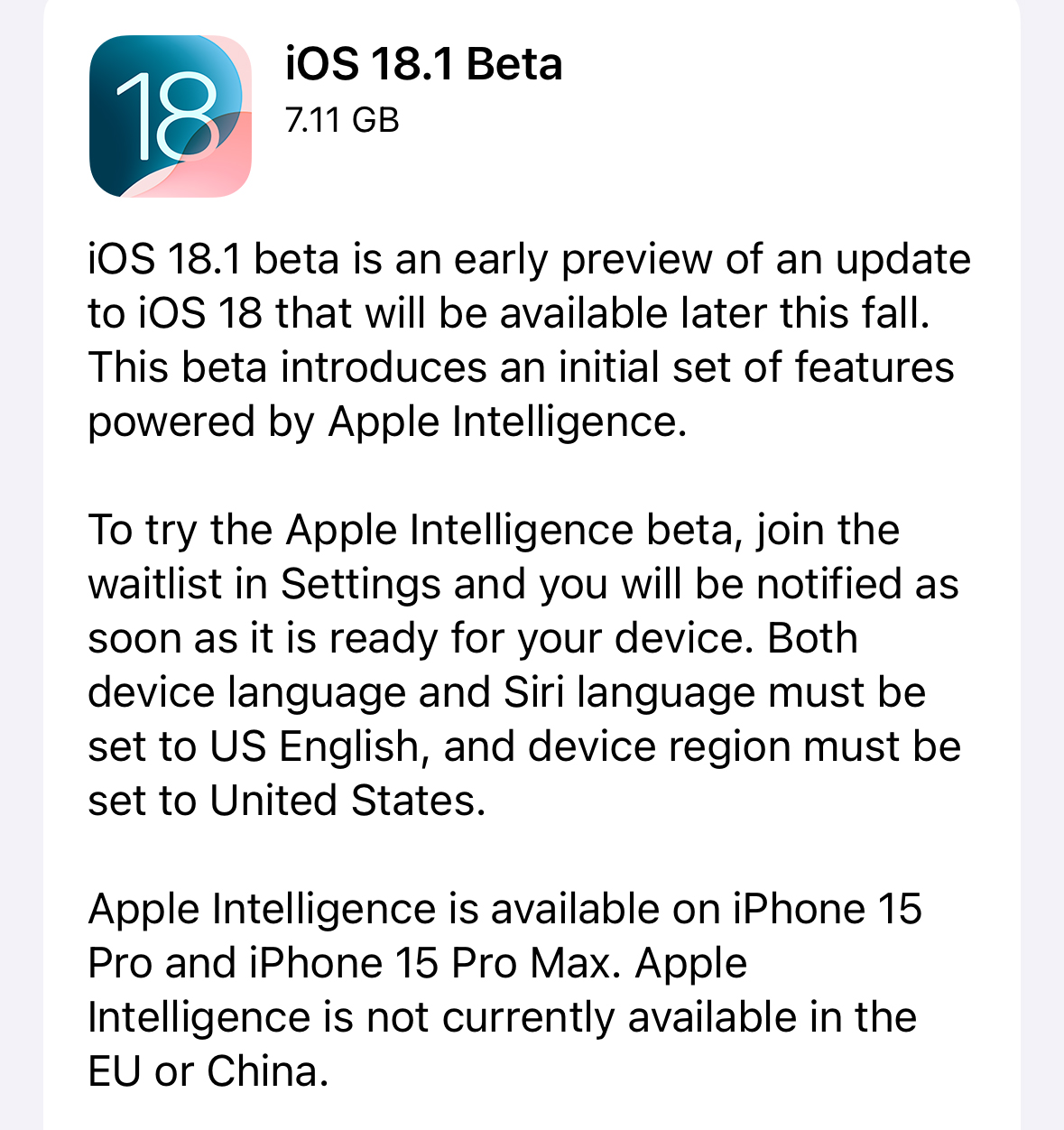Rumors of Apple Intelligence’s delays may have been greatly exaggerated. Apple’s own brand of generative AI, which is set to spread across iPhones, iPads, and Macs later this year, is arriving today – at least bits of it – in an early form developer betas for iOS 18.1, iPadOS 18.1 and macOS Sequoia 15.1.
It’s the first early access to Apple’s promised generative features and a hopeful sign that some parts of Apple Intelligence will arrive with the eagerly-anticipated iPhone 16. Apple is rolling out iOS 18.1 dev beta, iPadOS 18.1 dev betas, and macOS 15.1 dev betas to developers and supporting devices now to help developers understand Apple’s artificial intelligence intentions and prepare for Apple intelligence. The news comes just a day after Bloomberg reported delays that might have meant Apple Intelligence wouldn’t have arrived in time for iPhone 16. Now, it seems like the next iPhone is almost guaranteed to have at least a little bit of Apple Intelligence.
Apple Intelligence promises to bring things like writing help, natural language search, context persistence in Siri, creating memory movies based on prompts, transcription summaries, and much more. Not all of it will be available with this early preview. What’s more, especially at this early stage before we have a possible complete lineup of iPhone 16 handsets all running A17 Pro or better Apple Silicon, only iPhone 15 Pro, iPhone 15 Pro Max, and iPads and Macs running at least M1 chips can access the Apple Intelligence features inside the new dev betas. It also will only work for English-language (US) systems.

For those who can run it, here’s some of what they’ll find.
The first blush of the most significant Siri update in a generation will be there with a look at the new design, a double tap at the bottom of the screen to access text to Siri, and the ability to maintain context across multiple queries.
Developers can try out the generative writing tools in existing Apple apps like email for rewriting and summarization of text.
Email summaries and smart replies will be there, along with some natural language search capabilities in the Photos app, as will the ability to create movie memories based on canned and custom prompts.
Quite a few things will not arrive with these new dev betas like Genmoji creation, image creation, Photo Clean Up, and ChatGPT integration.
Unlike iOS public betas, developer betas are not intended for public consumption or to be installed on your primary device. That said, you will soon see screens from this early look at Apple intelligence that will give you your first tantalizing glimpse at what the new Writing Tools Box looks like, how the Type to Siri keyboard will appear, and how Siri will answer your query in text. These responses will include information based on Siri’s knowledge of apps and your system.
@techradar
♬ Disney-style fanfare-style BGM – harryfaoki
Apple Intelligence will not be on by default in iOS 18.1. Developers will need to go to the settings app where they’ll find a new option “Apple Intelligence & Siri”. From there, they can select to Join the Waitlist. After that, they’ll get a notification when it’s enabled. The waitlist appears to be a way for Apple to manage the load that might hit that new Private Compute Cloud, which will handle generative queries too intense for on-device computing, and all those Apple Silicon Servers. Apple Intelligence access is expected to arrive a few hours after developers sign up.
This piecemeal arrival of Apple Intelligence is a critical moment for Apple, especially if it wants to stay (heck, enter) the generative AI game. Google and Samsung already have a significant lead. We’ve been using gen AI features in Pixel phones of months and have enjoyed Samsung’s Galaxy AI since its launch at Unpacked in January and even more so on the new Samsung Galaxy Z Fold 6 we picked up in Paris at the second Unpacked of the year.
As for when Apple Intelligence will arrive in iOS 18 Public Betas, Apple has offered no guidance. As far as we know, Apple Intelligence is still arriving sometime this fall, which means anytime from September to late December. Let’s hope the wait isn’t that long and that it all arrives in time for the anticipated September launch of the iPhone 16.




















+ There are no comments
Add yours